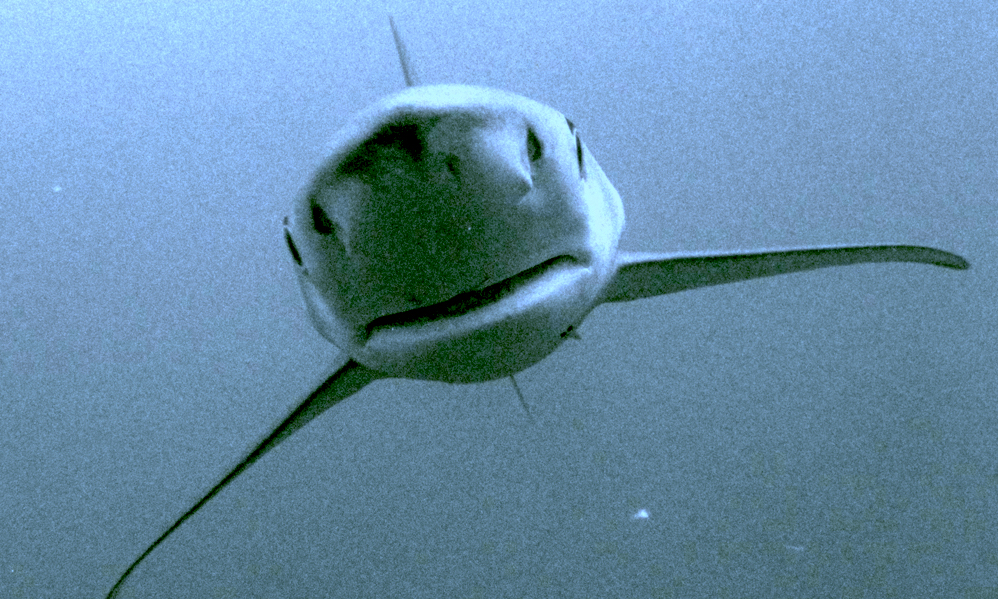Are Sharks and Other Highly Migratory Fish Populations on the Decline?

Water temperature matters when estimating the abundance of large, open-ocean predators.
Research Need
It’s impossible to count every fish in the sea to determine population changes over time. Instead, fishery managers use models that typically rely on characterizing population trends through scientific surveys and catch-and-effort data from fishers.
For highly migratory fishes, this method proves challenging. Such species — which include sharks, tunas, and billfishes — often are open-ocean predators that cover tremendous distances, even, in some cases, whole oceans. Survey programs often are too expensive, leaving fishery managers to depend largely on knowledge of fishery catch rates for these species.
When estimating population trends of highly migratory fishes, it is important to consider their open-ocean habitats, particularly these habitats’ surface and bottom water temperatures and related fishing practices. Changes in fishing practices over time can make assumptions behind calculations of population sizes incorrect.
What did they study?
Researchers used surface and bottom ocean temperatures from the National Oceanographic Data Center’s World Ocean Atlas data series in a sophisticated model. They applied this information to logbook data from operators in the U.S. Atlantic Ocean commercial “pelagic longline” fishery. Commercial fishers use pelagic longline gear, designed to hang near the surface, most often to catch highly migratory fishes.
For comparison, the team also analyzed data from scientific observers aboard pelagic longline fishing vessels. While fishermen continually adjusted their practices, the logbook and observer programs tracked this information, allowing researchers to better analyze and interpret how commercial fishers operate.
What did they find?
Researchers generated “relative abundance trends” for the populations of 34 highly migratory fishes that pelagic longline fishers routinely catch in the U.S. Atlantic Ocean. The majority (71%) of these species showed declines in abundance from 1987 to 2013, the timespan the researchers studied, but not all species declined at the same rate or magnitude.
This study’s methodology may result in more accurate measures of the abundance of fish species from this pelagic longline fishing fleet, which, in turn, may improve the stock assessments of these fish. Also, by accounting for how water temperatures affect fishery catch rates, researchers can refine their modelling to better inform management decisions.
Anything else?
Swordfish and blue sharks had the highest catch rates in the coldest habitats. Other species with higher catch rates in cooler habitats included bluefin tuna, shortfin mako, hammerhead sharks, and porbeagle.
Yellowfin tuna had the highest rates in the warmest habitats. In addition, wahoo, blackfin tuna, oilfish, skipjack tuna, dolphinfish, the billfishes (excluding swordfish), tiger sharks, thresher sharks, and night sharks had higher catch rates in warmer habitats.
Reading
Lynch, P. D., Shertzer, K. W., Corte´s, E., and Latour, R. J. 2018. Abundance trends of highly migratory species in the Atlantic Ocean: Accounting for water temperature profiles. ICES Journal of Marine Science75(4): 1427–1438.
The National Oceanic and Atmospheric Administration (NA09OAR4170119) provided funding for this study.
Summary compiled by Sara Mirabilio
Lead photo: blue shark (Prionace glauca), courtesy of the NOAA Fisheries/Apex Predators Program
The text from Hook, Line & Science is available to reprint and republish, but only in its entirety and with this attribution: Hook, Line & Science, courtesy of Scott Baker and Sara Mirabilio, North Carolina Sea Grant. HookLineScience.com
- Categories:



